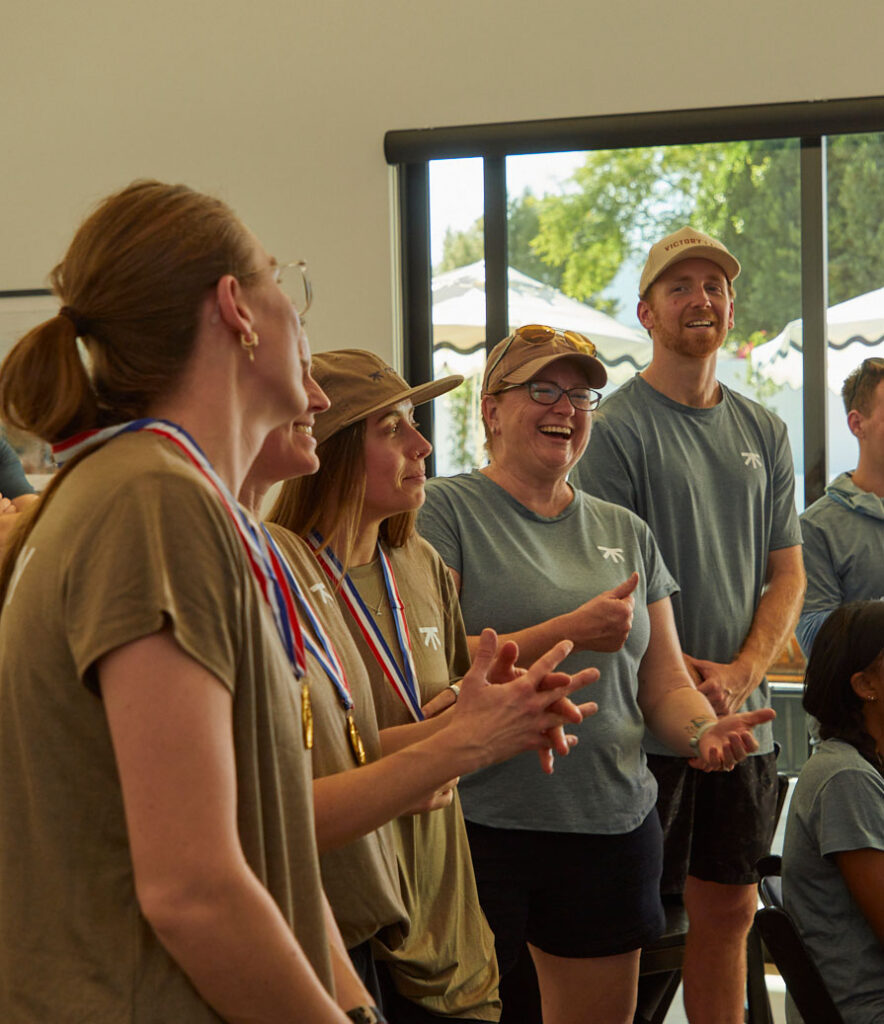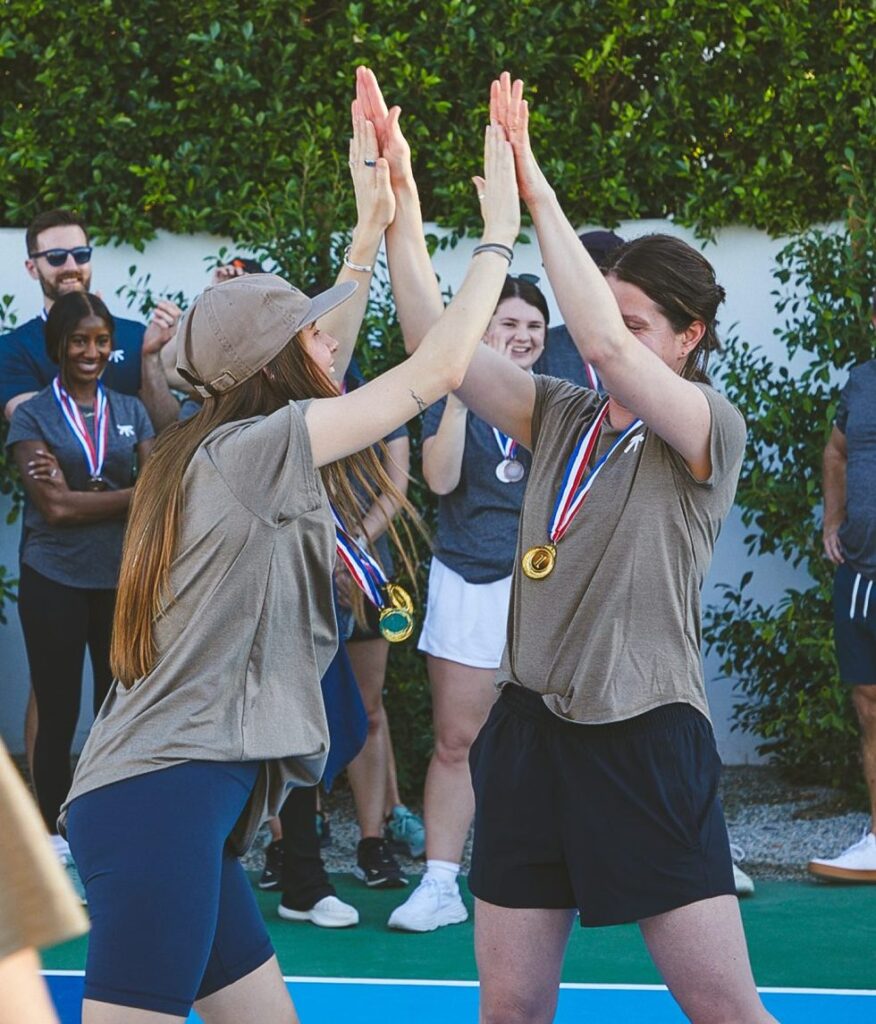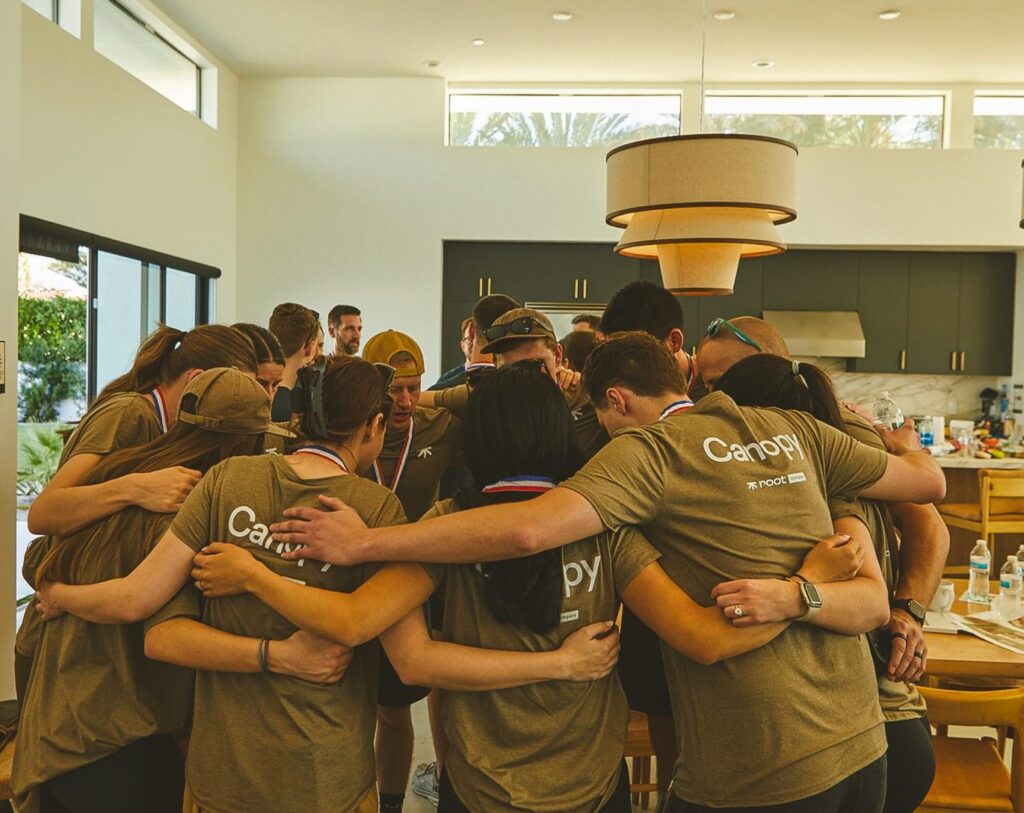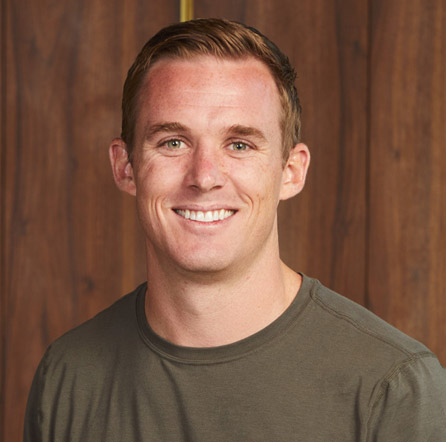Dig deeper.
Download the e-book and action plan for even more detail around how we work. (Coming soon!)
A high-output, low-chaos culture built for people who do work that matters.





I didn’t build Root to be the biggest firm. I built it to be a place where people can do meaningful work and still have a life.
Too much of this industry rewards the wrong things: long hours, constant urgency, and burnout disguised as commitment. I’ve lived that. And I know it doesn’t lead to better outcomes.
Root is different. We care about results, but not at the expense of the people doing the work. We believe in sustainable effort, deep focus, and the kind of habits that let you show up at your best, day after day.
What follows isn’t a list of rules. It’s how we operate. These tools have helped me do better work, serve people more thoughtfully, and stay steady in the process.
If you’re part of the team, I hope this feels familiar. If you’re thinking about joining us (or working with us) this is what we stand for.
For decades, the financial industry has celebrated the wrong things. Late nights. Always-on. Commitment measured in hours. Somewhere along the way, we confused exhaustion for excellence.
I know, because I lived it. It took burning out to realize I was chasing the wrong thing.
We’re building a different kind of firm at Root. One where performance isn’t measured by how long you sit at your desk, but by the problems you solve, the clarity you bring, and the impact you create.
In this guide, I outline the operating principles of that philosophy. Not as rules. But as tools. Because performance isn’t something we squeeze out of people. It’s something we unlock.

Give our team and clients the processes, the people, and the purpose they need to get the most out of life with their money.
Be the go-to place where people become the best version of themselves.
I learned early in my career that the people who stood out weren’t the ones chasing credit; they were the ones quietly making things better for everyone around them.
That lesson became the foundation for how I think about leadership. It’s why our single core value is Service. We live it every day through five core behaviors:
Anticipate needs before they’re voiced.
Personalize the experience.
Own the outcome—start to finish.
Follow through on what you say.
Communicate proactively.
Now that you know where the company is headed, we can focus on individual performance— which brings me to OKRs. They’re how we connect personal action to Root’s larger mission
"what."


"how."
—Gary Keller
Your Weekly Top 3 ensures you’re continuously making progress toward one or more of your OKRs. Not every task will connect directly to a Key Result, but each week should contain at least one focused effort toward your broader goals.
As part of your Weekly Reflection you should review your quarterly OKRs. This serves to reorient our thinking so that we can break our quarterly objectives into smaller goals.

Here’s what usually happens: You open your laptop and check your inbox—just for a minute. Then it’s Slack. Then Schwab. Then the market. Then Slack again. Before you know it, your best energy is gone.
That’s why the team and I write our Daily Top 3 at the end of each workday.
This habit rewires your attention. It helps you start each day in control, with focus and intention.

I spoke with everyone on the Leadership Team after wrapping up the first quarter and asked them the biggest challenges. Without fail, the feedback was they’d forget what their OKRs actually were.
It’s the reason I recommend creating a Focus page and setting it as your home/startup page. Every time you start your day quickly review your OKRs and your Weekly Top 3. Here’s how to set that up on Chrome. I like to go analog and write them out on a sticky note, too.

—Robert Brault
Don’t overbook meetings. Set a timer for what you actually need and move on.
Treat your calendar like a puzzle: block time for strategic work, admin, deep thinking, and client tasks—and stick to it.
After each task, ask: “Did I need that much time?” Adjust and tighten your schedule continuously.
You know that feeling when distractions fade and you’re just in it—thinking clearly, moving fast, creating great work without multitasking? That’s flow state. But it doesn’t happen by accident.
Here’s how I get into flow:
When I first got into the industry, I was told that rest and recovery was a luxury and success was measured by how many hours worked. But what I’ve learned is that it’s actually my strategic advantage.
When you treat rest as part of the performance cycle (not separate from it), you come back sharper, faster, and more focused. Here are some of my favorite tips for protecting your energy.
Every yes costs you something. Be clear on what matters most, and don’t overload your calendar with tasks that dilute your impact. Focus is how we create leverage.
You don’t need to be available for everything. You need to be available for the right things.
“Let me check my priorities before I commit.”
“I’m heads down on something big—can we revisit this next week?”
“I can’t take that on right now, but I can help you find someone who can.”
Time is trust. Start meetings on time. Prepare in advance. Close your tabs and silence distractions. Being present signals respect—to clients, teammates, and yourself.
A good meeting ends on time. Respect the agenda, manage the clock, and know when to land the plane. Going long doesn’t always mean you added value. It may just mean you talked too much.
Email isn’t the problem. Living in your inbox is. If you check email every time you hear a ping or feel the urge, your brain is constantly shifting gears. You go from focused thought to fragmented attention in seconds. It kills momentum and leaves you in reaction mode all day.
Set 1–3 windows per day to process email.
Turn off notifications (if it’s urgent, they’ll call).
Organize, respond, move on.
After a meeting, send the recap right away. That’s when context is sharpest, and it frees up mental space. Quick follow-up builds trust and momentum.
You learn by doing. Not by over-planning. If you’re 70% sure, go. A rough draft sent today is more valuable than a perfect one still in your head next week. Replace “I’ll think about it” with “here’s what I’m going to try.”
Start small. Adjust as you go. Forward momentum leads to better decisions.
One thing I’ve learned over the years is that you don’t always need permission to take a first step. You need the courage to start. A messy version in the wild is more useful than a flawless version stuck in your notes.
Stuck? Don’t spiral. Move. Send the note. Schedule the meeting. Create the draft. Every action shrinks uncertainty.

—Martin Luther King Jr.

I don’t believe in frantic work just for the sake of being busy. What matters is the quality of the effort, and the impact it has on real people’s lives.
At Root, we aim to get the right things done, without chaos. We protect our time, we protect our energy, and we show up for the things that matter.
Because in the end, it’s not about how many hours you worked. It’s about what changed because you did.
Download the e-book and action plan for even more detail around how we work. (Coming soon!)
If this approach feels right for you, reach out. We’d love to start a conversation.
We’re always looking for people who care about doing great work the right way.